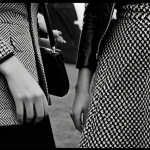The Role of Fashion in Personal Identity Among UK Women
Fashion and identity are deeply intertwined for many UK women, who use clothing as a vital form of self-expression. Through their style choices, women convey personality traits, values, and moods without uttering a word. This makes fashion a potent medium for establishing and communicating individuality in everyday life.
Clothing becomes a visual language where each garment or accessory represents a facet of the wearer’s identity. For instance, choosing bold colors or unconventional cuts may signal confidence and creativity. Conversely, classic or minimalist styles can reflect sophistication and practicality. In this way, fashion empowers women to narrate their personal stories externally.
In the same genre : How Can We Trace the Evolution of Women’s Fashion in the UK Over the Decades?
Distinctive fashion choices often highlight how UK women embrace uniqueness. This might emerge in mixing vintage with modern pieces or incorporating cultural symbols into their outfits, reinforcing a sense of belonging while maintaining personal flair. Such styles do not merely follow trends; they craft identities anchored in authenticity.
By embracing fashion as an expressive tool, UK women continuously shape and redefine their sense of self, demonstrating the dynamic relationship between appearance and personal identity.
This might interest you : How do UK women accessorize for formal events?
Cultural and Regional Influences on UK Women’s Fashion
Fashion in the UK is deeply shaped by British fashion culture, reflecting a rich tapestry of heritage, tradition, and diverse communities. Women’s clothing often embodies elements rooted in history—such as tartans symbolizing Scottish clans or Welsh patterns that hark back to Celtic origins. These cultural markers serve not only as fashion statements but as expressions of cultural identity.
Regional fashion differences across England, Scotland, Wales, and Northern Ireland highlight how geography influences style. For example, urban women in London may gravitate toward cutting-edge, cosmopolitan looks, whereas coastal communities in Cornwall might favor more relaxed, practical attire. In Scotland, the prominence of kilts and tweed reflects a strong connection to tradition, while in Northern Ireland, fashion sometimes integrates subtle references to political and cultural allegiances.
This variety demonstrates how clothing functions as a social signifier, reinforcing ties to community or heritage. British fashion culture thrives on this interplay between local customs and modern trends, enabling women to showcase their backgrounds while participating in contemporary style. Thus, fashion acts as a living narrative, blending regional influences and cultural stories uniquely expressed by UK women.
Fashion Trends Reflecting Social Change and Empowerment
Fashion trends in the UK increasingly reflect social change and women’s growing empowerment. Recent movements—such as gender equality campaigns and environmental activism—have influenced designers and consumers alike. These trends often challenge traditional norms by promoting inclusivity and self-expression.
How does clothing act as a tool for empowerment? It allows UK women to visibly assert their beliefs and challenge societal expectations. For example, styles that reject rigid gender binaries—like unisex or androgynous clothing—signal a shift toward broader acceptance of diverse identities. Simultaneously, sustainable fashion choices align with ethical values, reinforcing individual agency in global issues.
Notable UK women trendsetters have actively used fashion to endorse social causes. Their choices emphasize boldness and authenticity, inspiring others to explore fashion as a form of protest or solidarity. Clothing becomes more than aesthetic; it transforms into a statement of power and social consciousness. As a result, fashion trends in the UK do more than follow styles—they contribute to ongoing cultural conversations about empowerment and change.
This intersection of fashion trends UK and activism demonstrates how clothing choices facilitate personal and collective identity, offering both visibility and voice in evolving social landscapes.
Personal Stories: How UK Women Express Identity Through Fashion
Personal style stories reveal how UK women use fashion to navigate their unique journeys. Many describe clothing as a vital medium for self-expression, allowing them to articulate values and emotions during different life stages. For example, one woman shared how adopting vibrant patterns helped her regain confidence after a career change, illustrating fashion’s role in personal transformation.
Women’s experiences highlight diverse approaches to style choices—from embracing vintage to mixing high street with bespoke pieces—showcasing an interplay between individuality and cultural resonance. These choices often reflect an intimate dialogue between inner identity and external presentation.
Social media platforms further amplify this dynamic, offering spaces where personal narratives unfold through curated outfits and fashion experiments. The visibility of diverse styles encourages others to explore their own individuality confidently. Engagement with fashion communities online also fosters supportive networks, reinforcing how self-expression intersects with connection.
Thus, personal stories illustrate fashion as more than clothing—it is a complex language articulating identity, resilience, and growth. UK women’s experiences attest to the potency of style choices in shaping and reflecting who they are, proving the enduring link between fashion and identity is deeply personal and socially meaningful.
Expert Insights: Fashion, Identity, and Societal Perception
Experts in fashion psychology agree that clothing profoundly influences how UK women perceive themselves and how others perceive them. According to these specialists, fashion choices function as nonverbal communication, shaping both self-esteem and social identity. When a woman selects specific styles, it can elevate confidence and reinforce a positive self-image, highlighting the tight interplay between fashion and identity.
Sociologists emphasize that fashion also mediates social status and group belonging. For instance, wearing certain brands or adhering to specific style codes can signal membership within professional, cultural, or social circles. This dynamic reinforces how fashion is not only about personal taste but also about navigating societal expectations and fostering community connection.
Psychological research further reveals that individuals who express their individuality through bold or meaningful clothing tend to experience increased empowerment. This empowerment often emerges because fashion affords control over one’s public narrative and visibility.
In summary, expert opinions solidify the understanding that UK women’s fashion choices do more than decorate; they are strategic tools affecting how women position themselves in society. These insights underline fashion’s dual role in constructing identity and influencing external perceptions, confirming its critical place in contemporary life.






